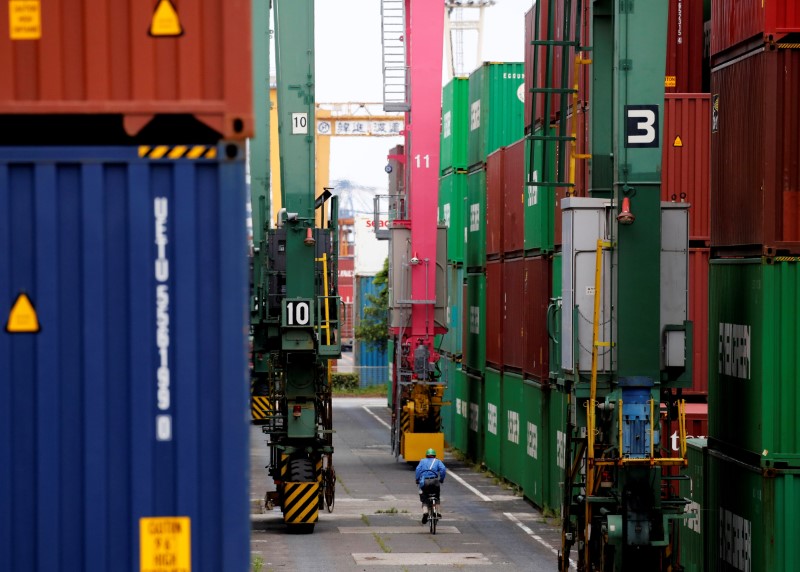By Tetsushi Kajimoto and Daniel Leussink
TOKYO (Reuters) -Japan's exports rose at the fastest pace since 1980 in May and a key gauge of capital spending grew, helping the world's third largest economy offset sluggish domestic demand as COVID-19 vaccinations boost business activity in key markets.
The jump in exports largely reflected a rebound in shipments from last year's pandemic-driven plunge, but was a welcome sign as the economy struggles to rebound from the first quarter's doldrums amid a prolonged coronavirus state of emergency.
The solid data will likely bolster the view that the central bank will stick with its ultra-easy policy at its June 17-18 policy meeting, although it may extend pandemic-relief programmes to back a fragile economic recovery. The government recently extended coronavirus emergency curbs in Tokyo and other major areas.
"We cannot count on private consumption, but an uptrend in exports and capital spending will help pick up the slack in the second quarter," said Takeshi Minami, chief economist at Norinchukin Research Institute.
"Still, export growth may lack strength as a global chip shortage will put a drag on car production over the next half year or so," he added.
Ministry of Finance data on Wednesday showed exports grew 49.6% year-on-year in May, versus a 51.3% increase expected by economists in a Reuters poll, led by U.S.-bound car shipments.
The jump followed a 38% rise in April and marked the sharpest monthly increase since April 1980, when shipments surged 51.4%.
May's rise largely reflected the recoil effect of a 28.3% plunge in May of 2020.
By region, exports to China, Japan's largest trading partner, grew 23.6%, led by chip production equipment, hybrid cars and scrap copper, the trade data showed.
Exports to the United States, another key market for Japanese goods, jumped 87.9% in May, a record for year-on-year growth according to comparable data going back to January 1980, driven by cars and auto parts.
Imports rose 27.9% year-on-year in May versus a median estimate for a 26.6% gain, resulting in a trade deficit of 187.1 billion yen ($1.70 billion), against the median estimate for a 91.2 billion yen shortfall.
Separate data by the Cabinet Office showed core machinery orders, which serve as a leading indicator of capital expenditure in the coming six to nine months, rose 0.6% in April from the previous month, below an expected 2.7% gain.
The Cabinet Office left its assessment on machinery orders unchanged, saying a pick-up was stalling.
A government official said solid overseas demand for chip manufacturing equipment helped support external orders, which jumped 46.2% in April, rebounding from a 53.9% fall in March.
Core orders, which exclude those for ships and electrical utilities, grew 6.5% year-on-year in April, versus an 8.0% gain expected by economists, the data showed.

The Bank of Japan is widely expected to keep its policy interest rate at minus 0.1% and the 10-year Japanese government bond yield target at around 0% at its policy meeting this week.
($1 = 110.0900 yen)